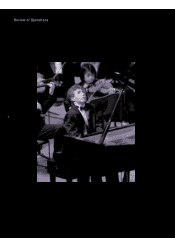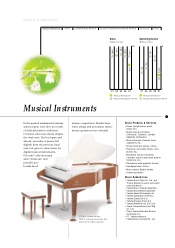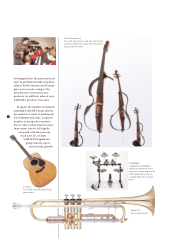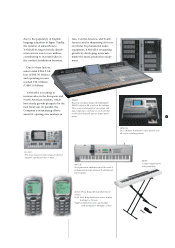Yamaha 2001 Annual Report Download - page 18
Download and view the complete annual report
Please find page 18 of the 2001 Yamaha annual report below. You can navigate through the pages in the report by either clicking on the pages listed below, or by using the keyword search tool below to find specific information within the annual report.
ach era is charac-
terized by drastic
changes, and the values
of the people living in
those times alter dramati-
cally. Amid the vagaries of the
tremendous changes in this current
age, YAMAHA must accurately
identify its customers’ expectations
and continuously respond to those
expectations. Now, we must consider
how we can maintain an unshake-
able relationship with our customers
over the long term.
We have selected “Kando” as the
core concept for our Yamaha brand.
Kando is the movement of people’s
hearts and the inspiration of hopes
and dreams, and it conveys a feeling
of happiness. We have chosen as our
new brand slogan “Creating Kando
Together.” YAMAHA has been in
business for more than 100 years and,
throughout that period, has always
worked to create Kando through its
sound- and music-centered technolo-
gies and refined aesthetic sense. Fur-
thermore, sound and music, which
transgress time and borders, connect the
hearts of all people in an immutable,
common language. YAMAHA is a
company that can create this Kando,
a feeling that goes beyond words.
The six letters of the YAMAHA
name appear at music venues world-
wide, including private homes.
YAMAHA pianos are also formal
instruments, used by famous
pianists in concerts and at interna-
tional piano competitions. Wind
instruments and orchestral instru-
ments are used in schools and by
professionals, while drums, guitars,
and synthesizers are an indispens-
able accompaniment to pop music
the world over.
Meanwhile, first-rate Japanese
and foreign broadcasting stations,
Carnegie Hall in New York City,
16
“Creating Kando Together”— Creating a New YAMAHA Brand
The Evolution of YAMAHA’s Logotype
1898 1934 1937 1960 1961 1969
YAMAHA’s origins can be traced back to a single broken musical organ. The
man asked to repair the organ was Torakusu Yamaha (1851-1916), a medical
instrument repairman who later founded YAMAHA. Opening the organ and
looking inside, Torakusu realized that he might be able to make one himself, so
he decided to try. While fixing the instrument, he created a blueprint of its
interior, which provided a model for the first organ produced in Japan.
This was the birth of YAMAHA. Soon after making the organ,
Torakusu took it from Hamamatsu City in Shizuoka Prefecture to
Tokyo (approximately 260 kilometers) to have it examined by an
instrument appraisal office. After inspecting the organ, they praised its
form, but said that it could not be played because the quality of its
sound was poor. He decided to stay in Tokyo and study music and tuning
theory. After developing his own tuning method, he worked around the
clock for four months on his second organ. Completed in 1887, this second organ
was highly praised. In fact, Torakusu was told that it was as good as an imported
model. This was the first fully functional YAMAHA instrument made in Japan,
and it marked the beginning of YAMAHA’s history and the creation of Kando.
The Origin of
YAMAHA
Corporate History
























